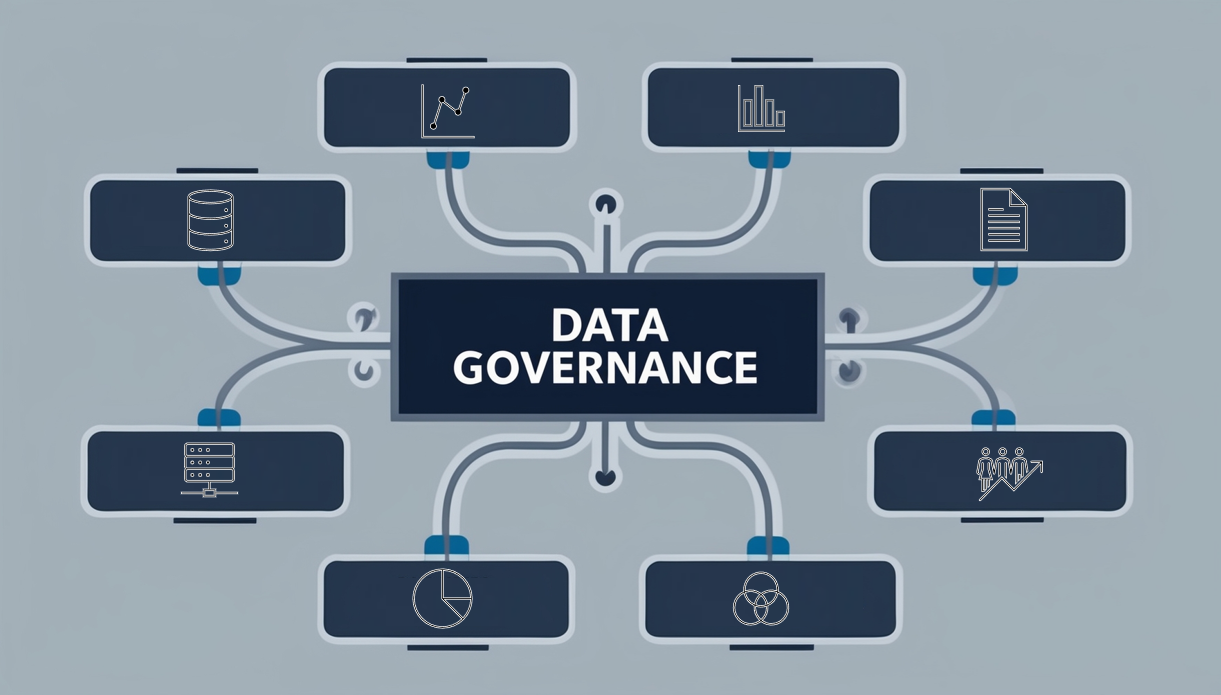This e-book details a framework and maturity model for big data governance. CIOs can use this framework to create a structured approach to governing their big data capability. (300 pgs)
In an era where data is the new oil, organizations are inundated with torrents of data every day. This explosion of information, known as big data, holds immense potential but also presents unprecedented challenges. While companies grapple with harnessing the power of big data for driving business value, there's an underlying struggle that often goes unaddressed: the chaos of managing and governing this vast digital resource.
The challenge begins with understanding what big data truly entails. It's not just the volume but the variety, velocity, and veracity of data that organizations need to manage. This data influx can revolutionize decision-making and strategic moves, but it also raises significant questions: How can businesses derive reliable insights from such a complex data landscape? How do they ensure the quality, security, and privacy of this data? Furthermore, in the absence of proper governance, data can become an uncontrollable beast, leading to inconsistent information, questionable decisions, and regulatory nightmares.
This guide doesn't just raise these pressing issues but agitates the need for a disciplined, structured approach to big data governance. Without it, organizations risk data breaches, privacy violations, and the inability to trust their own business insights — issues that can tarnish reputations and bottom lines.
However, this comprehensive guide offers a lifeline. It introduces a capability maturity model framework for big data governance, providing a strategic roadmap for organizations to manage, protect, and enhance the value of their data assets. The framework isn't just about putting rules in place; it's about building a data culture. From understanding the core elements of big data governance to implementing key steps, this guide helps establish standards, assess progress, and control the trajectory of your big data capabilities. It delves into the security and privacy implications of big data, elucidating how robust governance is pivotal in safeguarding sensitive information and delivering consistently reliable insights.
This Guide on Big Data Governance will help you understand:
- What is big data?
- How is big data used for business value?
- What is big data governance?
- Why do we need a disciplined approach to big data governance?
- What are the key elements of big data governance?
- How to assess and control progress using a capability maturity model?
- What are the security and privacy implications of big data and how can governance help?
- How does governance help deliver consistently reliable information from big data?
- What are the key steps in implementing big data governance?
This guide is more than just a theoretical discourse; it's a practical, actionable blueprint for instilling discipline in big data chaos. By applying the principles laid out in this guide, organizations can not only mitigate risks but also cultivate a data-driven culture that fuels innovation, trust, and business growth. In the realm of big data, governance is not a bureaucratic hurdle, but a catalyst for unlocking true business value.
This is an excellent governance framework that can be applied to create a structured approach to big data in your organization. MUST Read!
CIOs, grappling with the vast complexities of big data, can utilize this guide to address several real-world problems inherent in the digital age:
- Data Management and Quality Control: By applying the principles of the capability maturity model, CIOs can establish standardized procedures for data management, ensuring consistency, accuracy, and reliability of data. This is crucial for making informed business decisions and avoiding costly mistakes that arise from poor data quality.
- Security and Compliance: The guide provides strategies for enhancing data security, an ever-present concern with increasing cyber threats. Through robust governance, CIOs can ensure compliance with data protection regulations, thereby reducing legal risks and safeguarding the organization's reputation.
- Operational Efficiency: Effective data governance can lead to improved operational efficiency. By understanding and implementing the best practices outlined in this guide, CIOs can prevent data duplication, streamline data processes, and ensure that data assets are not misallocated or misused.
- Risk Management: The guide helps CIOs identify potential data-related risks and provides a structured approach to mitigating them. This is particularly important in an era where data breaches and other data-related scandals can have catastrophic effects.
- Strategic Decision-Making: With a governance model in place, CIOs can ensure that the data used for strategic decisions is accurate, up-to-date, and complete. This leads to better decision-making, helping organizations to stay competitive and responsive to market changes.
- Fostering Innovation: By establishing clear data governance, organizations can better harness their data for innovation. Clear governance removes ambiguity about data use and opens opportunities for leveraging data in new and exciting ways, driving the business forward.
- Customer Trust and Satisfaction: Consumers are increasingly concerned about their data privacy. By following the governance practices in this guide, CIOs demonstrate a commitment to data privacy and security, thus building customer trust and loyalty.
- Cost Reduction: Poor data governance can lead to unnecessary expenditures related to data management errors and inefficiencies. The guide’s framework helps CIOs in identifying areas where costs can be reduced without compromising data quality or security.
- Facilitating Change Management: As organizations evolve, so does their data. This guide provides CIOs with the tools to manage change effectively, ensuring data systems and processes align with evolving business goals and strategies.
By leveraging the detailed framework and insights in this guide, CIOs can transcend traditional data management, turning big data into a strategic asset that drives growth, innovation, and competitive advantage in the real world.

